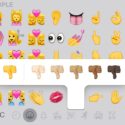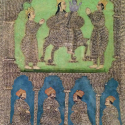Two years ago I reviewed some of the literature on emoticon use, concluding that emoticons are words. This was, perhaps, a mere academic curiosity. After all, emoticons don’t share all the characteristics that we typically associate with words—pronounceability, for instance. This shouldn’t deter us, though; as artifacts of visual communication, it doesn’t make sense to limit them by definitions from aural communication. But who really cares/cared?
This year, Oxford Dictionaries announced that their word of the year is the Face with Tears of Joy emoji. This is delightful. Apparently 2015 was a big year for emoji, and particularly 😂. And yet there’s a lot of resistance to this… presumably because emoji aren’t perceived as words. Indeed, even the Oxford Dictionaries announcement says:
😂 was chosen as the ‘word’ that best reflected the ethos, mood, and preoccupations of 2015.
Their putting “word” in quotes implies that they aren’t so sure it’s actually a word, even though they seem to have a hunch (in my opinion, correctly) that it is. Other news sources, predictably, are a little more inflammatory. Newsweek proclaims: “Oxford Dictionaries Word of the Year Is Not a Word.” Ditto for Fox News (Oxford Dictionaries’ ‘word’ of the year is not a word).
I suspect all linguistics students and teachers are tapping the tips of their fingers together in a Mr. Burnsian fashion at all this. Because now the consumers of popular media are (well, hopefully) confronting the question of what a word actually is—which is the subject of considerable grappling in any Linguistics 101 course.
 Follow
Follow

